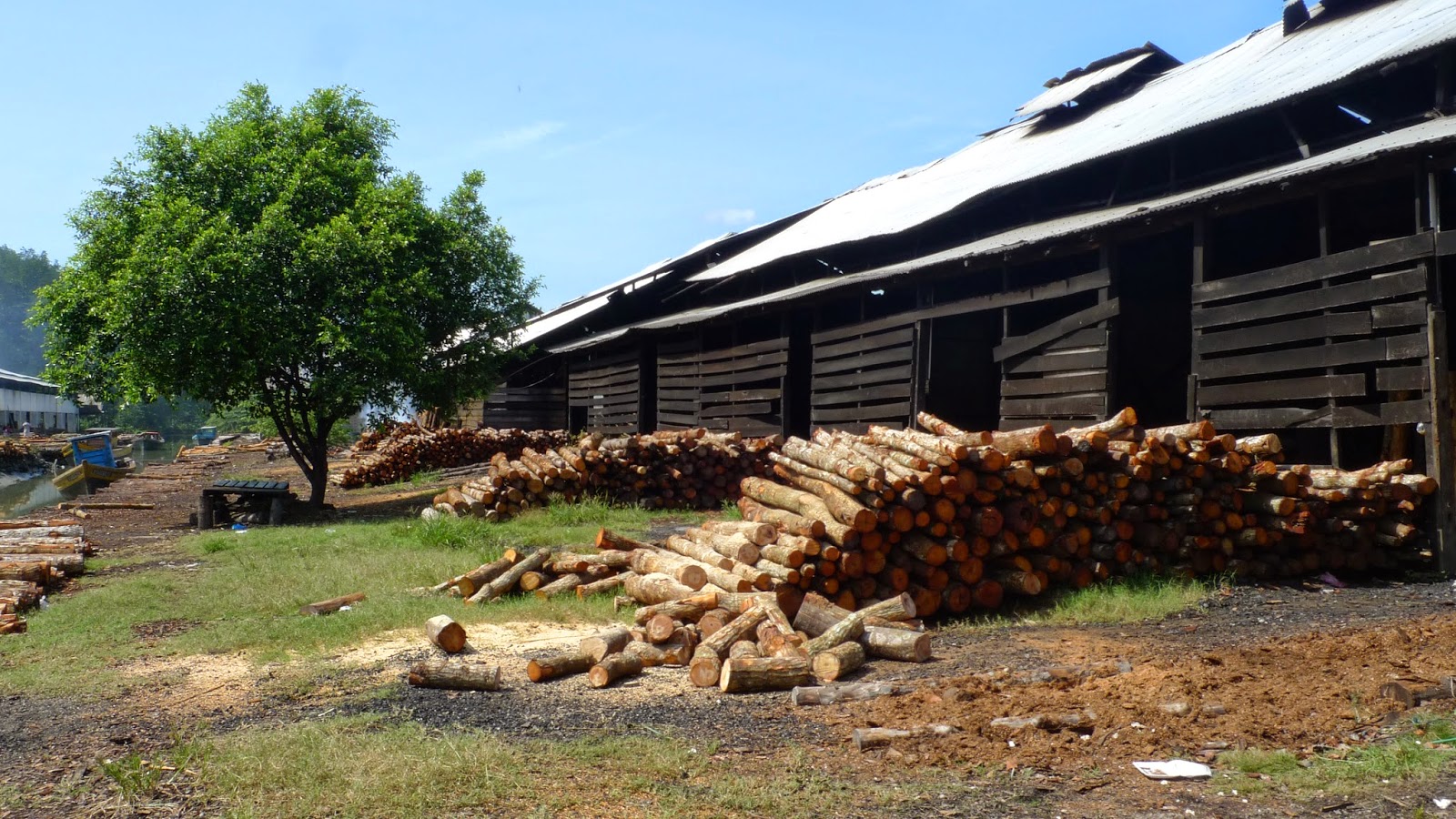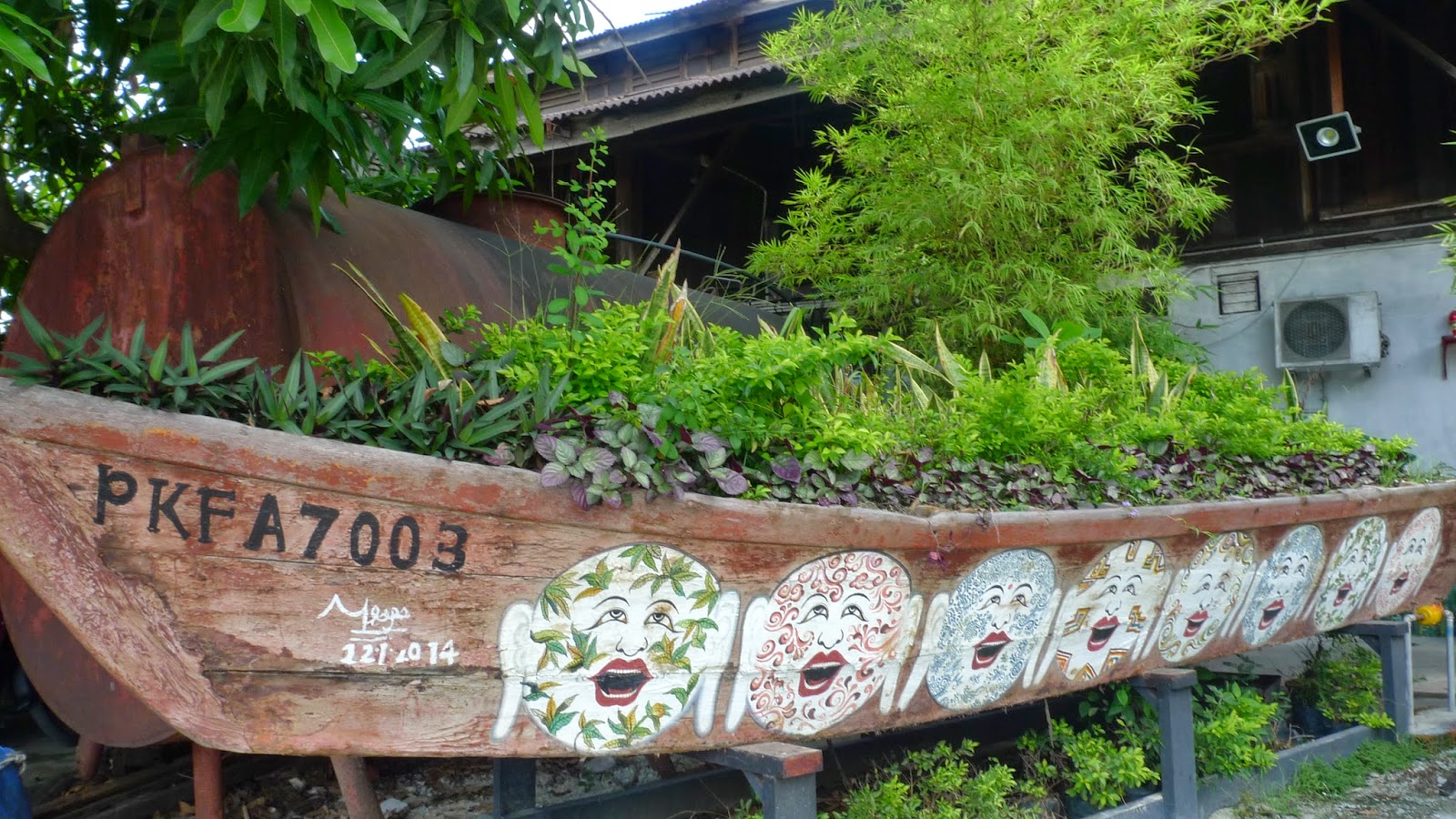Happy Malaysia Day.
After a restful night and a good breakfast, we said our goodbyes to Ipoh and made our way to Kuala Sepetang Charcoal factory.
the immense factory with hardly any staff around! Later you will know why!
The burning smell of charcoal was prevalent but not overpowering but it soon cling onto our clothes and hair
We met Mr. Chuah, the owner who was showing and explaining to all the visitors all about the charcoal business.
Each kiln is built manually with over 26,000 bricks and stand over 7 metres tall.
The logs are arranged in a circle and note they are resting on top of a stone not direct onto the floor, so that they cannot get burnt. The kiln is then sealed except for the small opening for the fire.
At the beginning, high heat is lit to start the smoking process whereby the water content is drawn out. The logs are not burnt as I had thought so.
this goes on for about 5 days
Once the foreman can smell (yes it is by smelling) the dryness of the logs, the fire is immediately lessen to a small fire now.. Notice the smoke coming out from the right side opening and there is a pipe leading outside for the condensation of the vapour.
this is where we can smell water vapour.... now what do you think it smell like.... wasabi, honey or vinegar?.
the kiln is totally sealed thereafter for 14 days. This will allow the logs (now blackened logs (charcoal) to cool down as well as to prevent any oxygen getting in otherwise all the logs will start to burn!
Again it is manually touching and feeling the heat/coolness of the kiln to know when the charcoals can be taken out.
This is the 2nd generation owner of the factory... Mr. Chuah. He is holding a bottle of vinegar (the smell remember?) which is the by-product from the condensation.
So you can see the emptiness but as Mr. Chuah said, the whole process requires a lot of close attention.
Beside the factory is a small river. ...
This is an important transportation mode for the logs to be bought down from the forest.
The logs are then laid out to dry and sorted into grades. The logs are cut according to government specifications: around 1.6 metres each and can only get around 3 logs per tree.
The quality of the charcoal depends on the trees and most of his charcoal are exported to Japan. He told us that he has a buyer for the barks too.... as a colouring additive for cheap brandy!
We bought some charcoal ... they are best used to absorb smells inside the fridge, shoe racks etc.
Kuala Sepetang is a small fishing village and was formerly known as Port Weld, named after the British governor Frederick Weld. The Port Weld Railway Station from here to Taiping was located at the centre of the town and it was the first railway in Peninsular Malaysia. It has been dismantled and only the signboard and ticketing booth remain as a coffee shop. I did saw the sign but missed taking a photo.!
One of the many fishing and eatery shops around
drying fish in the sun.
hot water in thermos for our refill for tea....
the seafood porridge...... not the typical smooth and silky Cantonese porridge but more watery more like rice mixed with seafood.
but the seafood taste really really fresh and yummy......
their signature "mee- dried style" ... slightly spicy but mee was handmade and chewy.. thumbs up! This was served with another bowl of same seafood soup (minus the rice).
After lunch, we stopped by the Matang Mangrove Forest. There was a family of monkeys frolicking around the parking area and we were scared that they will come after us. So we quickly took a short walk of the forest before departing for KL.































No comments:
Post a Comment